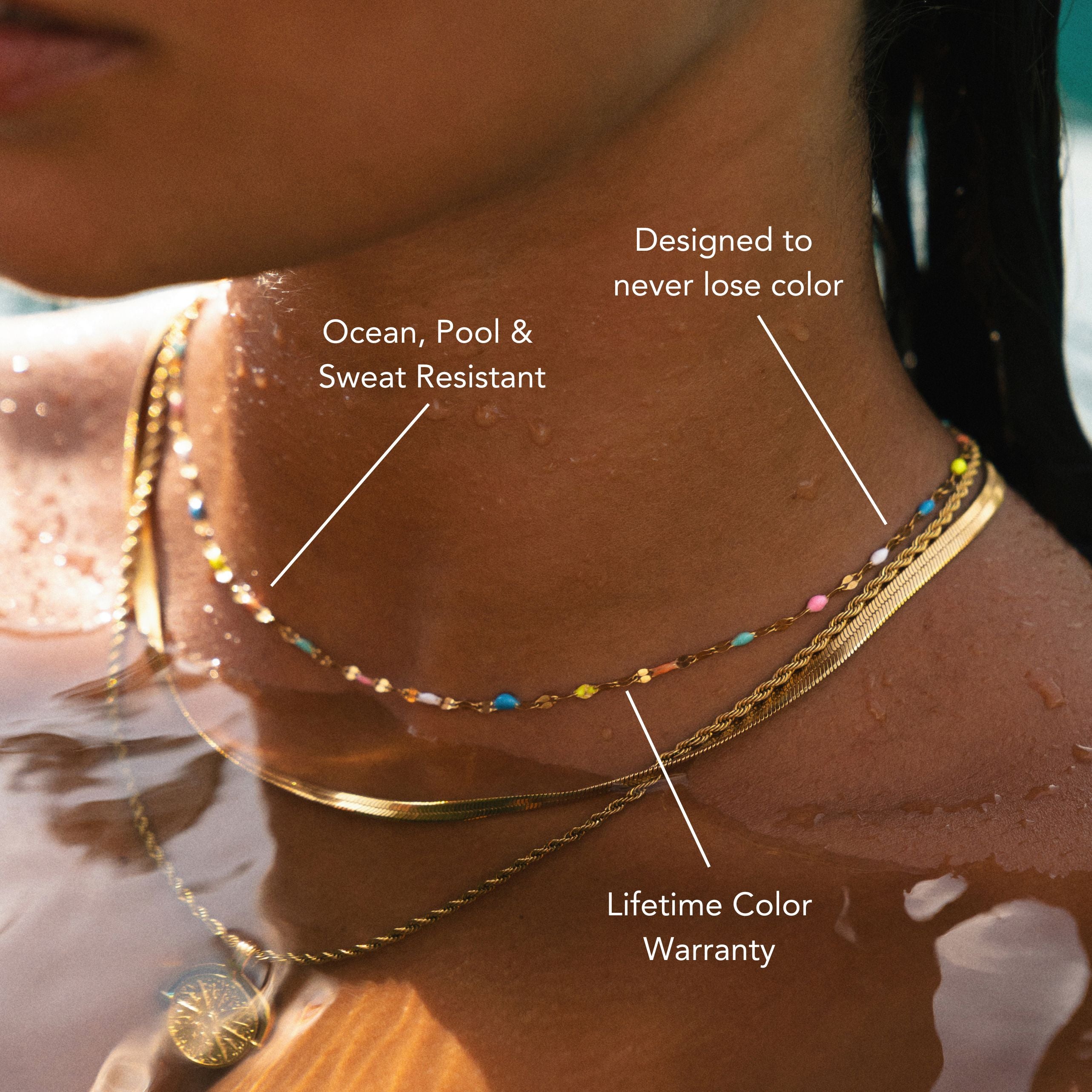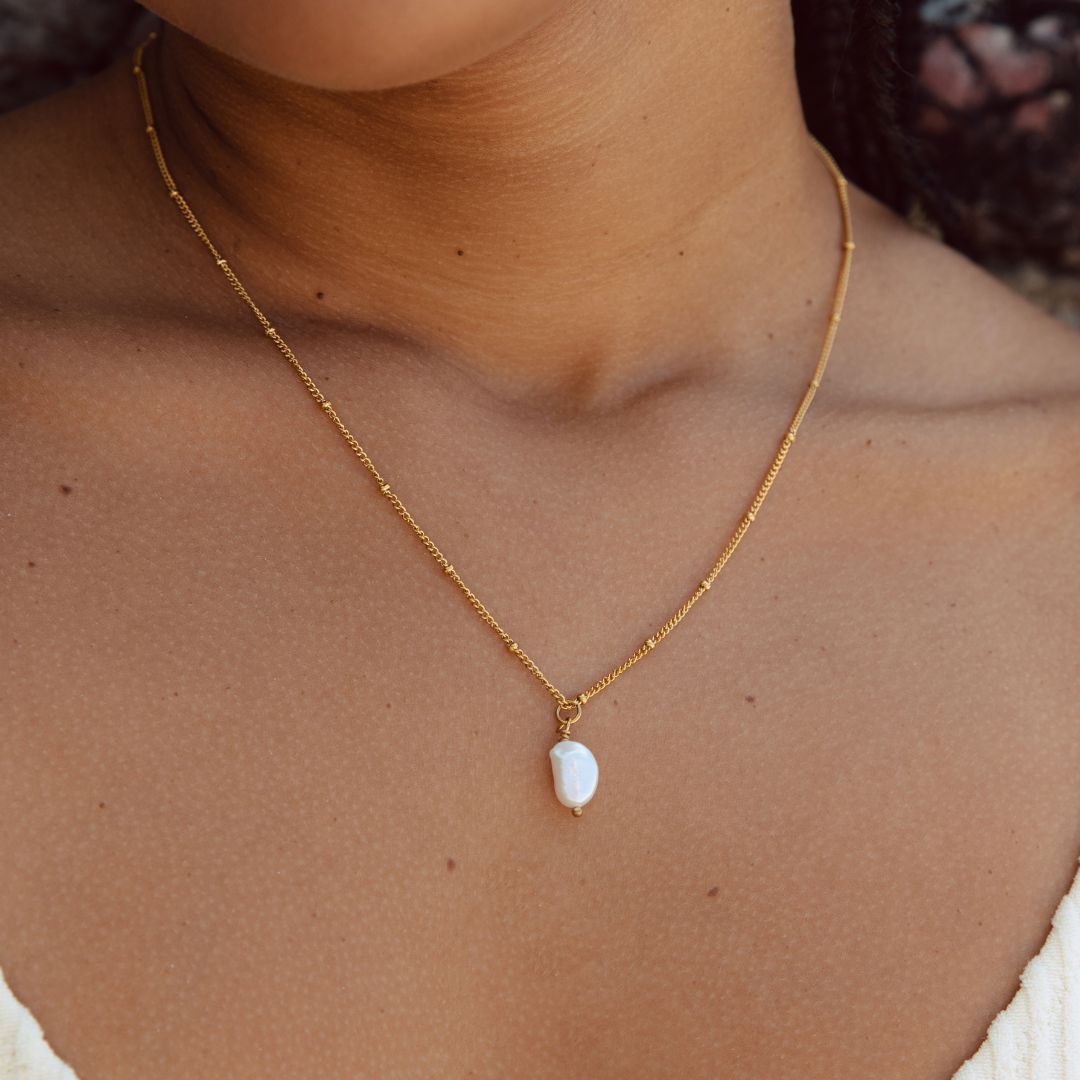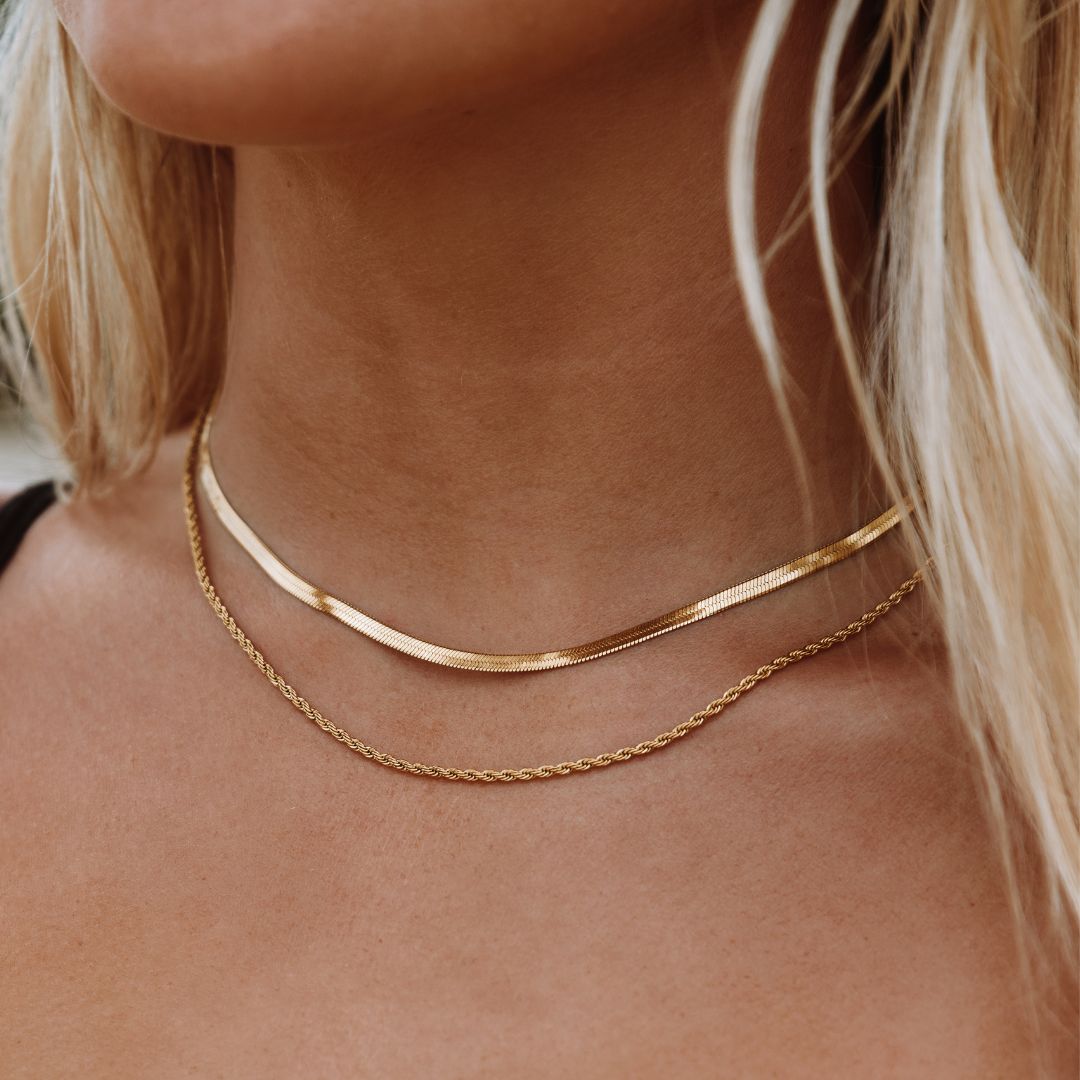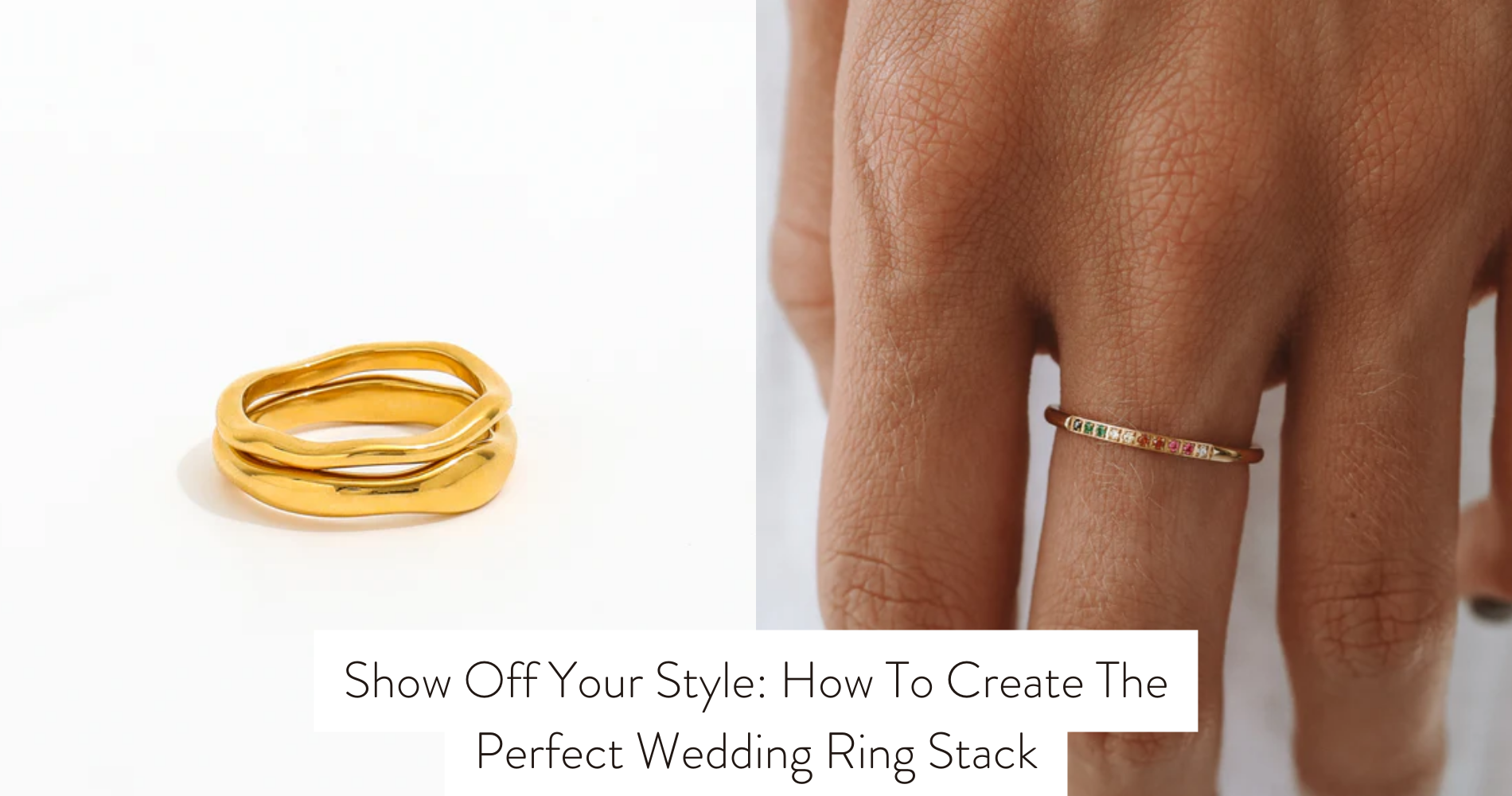
Can Stainless Steel Get Wet? Learn How To Safely Clean & Protect It
Did you know that stainless steel is an excellent choice for crafting durable and stylish jewelry, rather than being exclusively reserved for kitchenware? If you want to keep your stainless steel jewelry items looking shiny and new, it's crucial to know how to properly clean and protect them.
In this article, we'll share best practices for cleaning stainless steel used in jewelry, tips for protecting it from water damage, and common mistakes to avoid.
Plus, we'll recommend products that will help you keep your stainless steel jewelry looking its best.
Importance of Properly Cleaning Stainless Steel Jewelry
Ensuring the enduring allure of your stainless steel jewelry, particularly pieces like the Calvi rope chain bracelet, requires diligent cleaning. Stainless steel's popularity in crafting jewelry stems from its durability, corrosion resistance, and the contemporary elegance it imparts to accessories. Yet, without consistent and appropriate cleaning, stainless steel jewelry may lose its sheen and be prone to stubborn stains.

When it comes to removing stains from stainless steel jewelry, there are a few effective methods you can try. One option is to use a mixture of warm water and mild dish soap. Apply the soapy mixture to a soft cloth or sponge and gently scrub the stained area. Rinse the stainless steel jewelry thoroughly with clean water and dry it with a soft towel to prevent water spots.
Another method is to create a paste using baking soda and water. Apply the paste to the stain on your stainless steel jewelry and let it sit for a few minutes before scrubbing it with a soft cloth. Rinse and dry the jewelry afterward.
Best Practices for Cleaning Stainless Steel Jewelry
For optimal cleaning of stainless steel jewelry, such as the hammered hoops earrings, employ a gentle approach. Utilize a soft cloth or sponge along with a mild cleaning solution to effectively eliminate dirt, grime, and fingerprints without risking any damage. When tackling stains on your stainless steel jewelry, employing the correct techniques is crucial for ensuring thorough and effective removal.

For grease stains on your stainless steel jewelry, using a mixture of warm water and dish soap can help break down the grease and make it easier to wipe away. For stubborn stains, you can create a paste by combining baking soda and water, then gently scrub the stain with a soft cloth or sponge. Remember to always rinse the stainless steel jewelry thoroughly after cleaning to remove any residue from the cleaning solution.
In addition to knowing the best techniques for removing stains, it's also important to prevent scratching the surface of your stainless steel jewelry. Avoid using abrasive cleaners or scrub brushes, as they can leave scratches on the surface. Instead, opt for non-abrasive cleaning tools like microfiber cloths or soft sponges. When wiping down your stainless steel jewelry, make sure to go with the grain of the metal to prevent any potential scratching.
Furthermore, avoid using steel wool or harsh chemicals, as they can cause permanent damage to the finish of your stainless steel jewelry.
Tips for Protecting Stainless Steel Jewelry From Water Damage
To protect stainless steel jewelry from water damage, you should ensure that it's properly sealed and maintained. Waterproofing techniques are crucial in preventing rust and maintaining the integrity of stainless steel surfaces used in jewelry.
One effective method is to apply a waterproof sealant specifically designed for stainless steel jewelry. This sealant creates a protective barrier that prevents water from seeping into the metal and causing damage. It's important to thoroughly clean and dry the surface of your stainless steel jewelry before applying the sealant to ensure maximum effectiveness.
Additionally, regular maintenance is essential in protecting stainless steel jewelry from water damage. This includes wiping down the surface with a soft cloth or sponge after it comes into contact with water to remove any moisture. Avoid using abrasive cleaners or scrub brushes, as they can scratch the surface and compromise the sealant.
In areas where water exposure is more frequent, such as during handwashing or in outdoor settings, it may be necessary to reapply the sealant periodically to maintain its waterproofing properties.
Common Mistakes to Avoid When Cleaning Stainless Steel Jewelry
Avoid these common mistakes when cleaning stainless steel jewelry to ensure its longevity and shine.
One of the most important things to remember is to avoid using abrasive materials or rough scouring pads, as they can cause scratches on the surface of your stainless steel jewelry. Instead, opt for soft cloths or non-abrasive sponges to gently clean the surface.
Another mistake to avoid is using the wrong cleaning agents. Harsh chemicals, such as bleach or ammonia-based cleaners, can damage the stainless steel used in your jewelry and leave behind unsightly stains. Instead, use mild detergents or specialized stainless steel cleaners that are specifically designed to clean and protect stainless steel surfaces in jewelry.

It's also important to remember to always follow the manufacturer's instructions when using any cleaning products on your stainless steel jewelry.
Finally, avoid leaving water or cleaning solutions on your stainless steel jewelry for extended periods of time, as this can lead to water spots or discoloration. After cleaning, be sure to thoroughly dry the jewelry with a clean, soft cloth to prevent any water marks.
Recommended Products for Cleaning and Protecting Stainless Steel Jewelry
For cleaning and protecting stainless steel jewelry, you can consider using recommended products that will help maintain its shine and longevity. Stainless steel jewelry maintenance is important to prevent rust and keep your accessories looking their best. There are a few key products that can help you achieve this.
First, you can use a stainless steel cleaner specifically designed for stainless steel jewelry. These cleaners are formulated to remove fingerprints, smudges, and stains without scratching the surface. Simply apply the cleaner to a soft cloth and wipe the stainless steel jewelry in the direction of the grain.
Another option is to use a stainless steel polish. This product not only cleans the surface of your stainless steel jewelry but also helps to protect against future stains and water spots. Apply a small amount of polish to a cloth and buff the stainless steel jewelry until it shines.
If you prefer a more natural approach, you can also use mild dish soap and warm water to clean your stainless steel jewelry. Mix a few drops of dish soap with warm water, dip a cloth into the solution, and gently scrub the stainless steel jewelry. Rinse with clean water and dry thoroughly to prevent water spots.
In addition to cleaners and polishes, there are also stainless steel protectants available for jewelry. These products create a barrier on the surface of the stainless steel, preventing dirt, grime, and water from penetrating the surface. Apply the protectant according to the manufacturer's instructions for long-lasting protection.
Frequently Asked Questions
Can Stainless Steel Rust if It Gets Wet?
Yes, stainless steel can rust if it gets wet. To prevent and treat water spots on stainless steel surfaces, wipe them dry after they get wet. Properly drying stainless steel helps prevent rusting.
Is It Safe to Use Bleach or Other Harsh Chemicals to Clean Stainless Steel Jewelry?
Using bleach or other harsh chemicals to clean stainless steel jewelry should be avoided, as they can cause damage and discoloration. Vinegar is a safer alternative for cleaning stainless steel jewelry, as it is effective and gentle.
How Often Should I Clean My Stainless Steel Jewelry?
To keep your stainless steel jewelry looking its best, clean it regularly and wipe off fingerprints with a soft cloth and mild soap. To prevent water spots, dry the jewelry thoroughly after it gets wet.
Can I Use Abrasive Scrub Pads or Brushes to Clean Stainless Steel Jewelry?
To clean stainless steel jewelry without using abrasive scrub pads or brushes



















Leave a comment
This site is protected by hCaptcha and the hCaptcha Privacy Policy and Terms of Service apply.